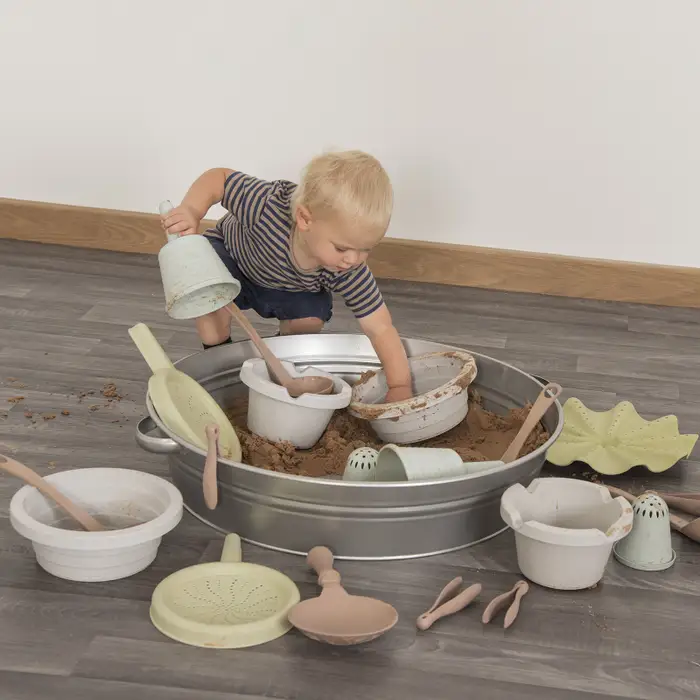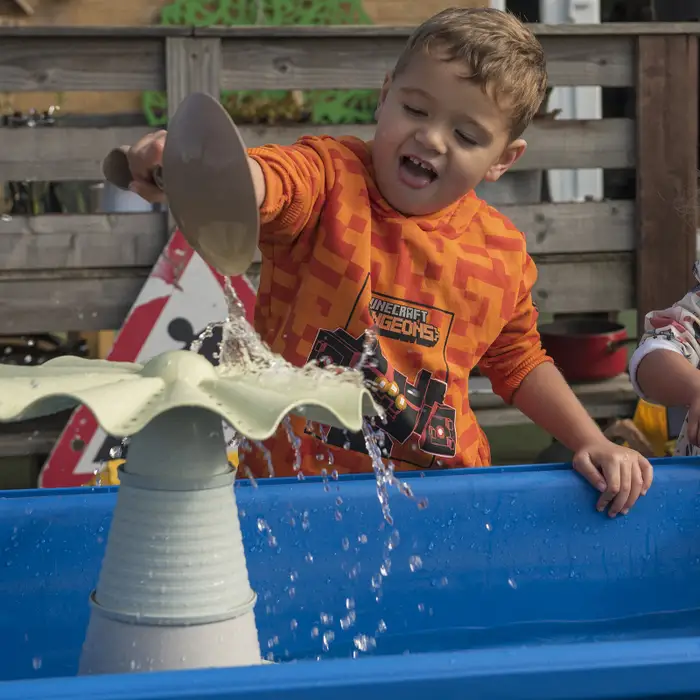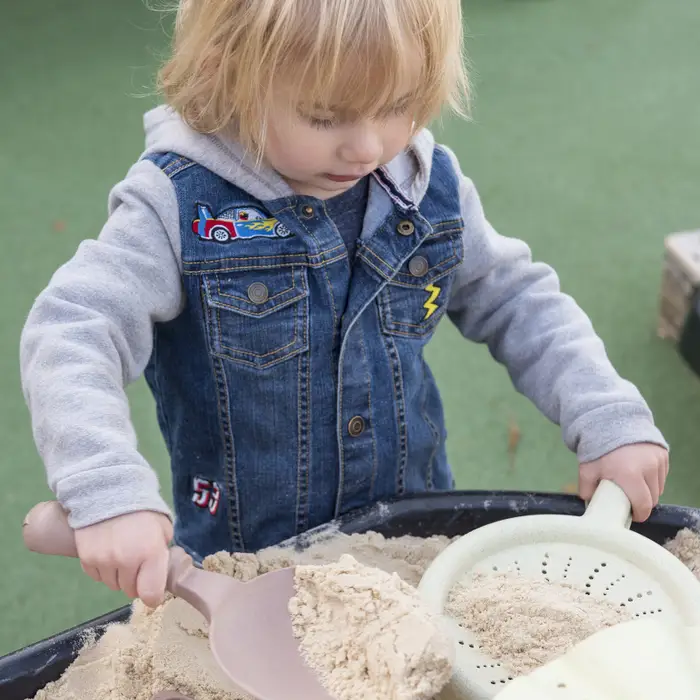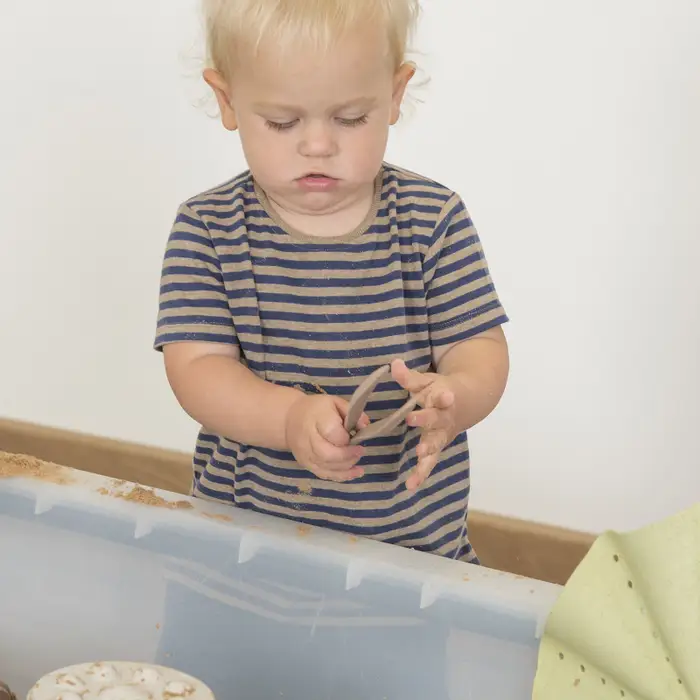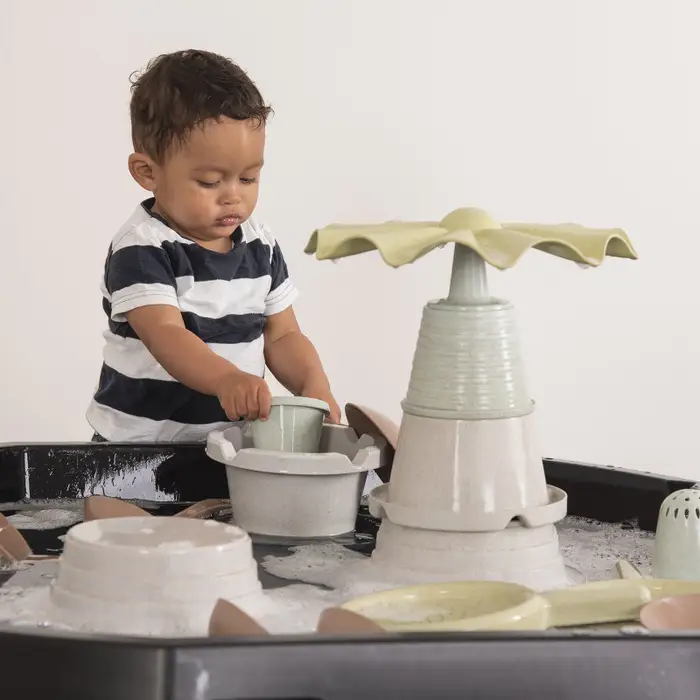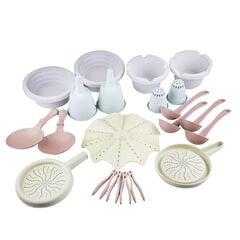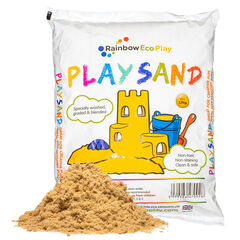Sand and water play captivates and inspires young children in their early years. By offering an assortment of resources such as sand shakers, different sized pots, water spinners, sieves, scoops, ladles, and tweezers, we can provide the perfect ingredients for immersive play, sensory exploration, and skill development. The Sand and Water Eco Kit contains a range of resources that supports the development of many skills.
Here are a few ideas that you may like to try:
Shake it up
Fill shaker like containers with an array of different materials e.g. soft/wet sand, pebbles and water. Encourage children to shake, listen, and feel the grains of sand and drops of water as they drip through the holes of the different surfaces. From smooth and silky to coarse and gritty, this activity helps develop their tactile awareness and introduces them to a rich variety of materials, textures and language.
Scooping and pouring fun
Give children the chance to experience the concepts of measures and volume using the pots of varying sizes. As they scoop and transfer water or sand from one pot to another, this adventure of pouring and filling supports the development of hand-eye coordination and fine motor skills. Watch their faces light up as they experiment and explore the concepts of capacity and spatial relationships.
Water experiments
Introduce children to the wonders of water with captivating water cascades and spinners. Pour on water and spin! Alternatively, build towers from the different parts to create bigger structures. Watch in awe as the water drips through the holes and sprays arcs of water in a circular motion. Encourage little scientists to experiment with different speeds and quantities of water, igniting their curiosity and fostering an understanding of cause-and-effect.
Sand sifting and sorting with sieves
Unleash the scientist within by engaging children in the art of sand sifting and sorting. With the help of the sieves, they can separate the sand and other materials based on grain, size or type. From creating patterns to comparing textures, this activity enhances critical thinking skills and provides an introduction to basic scientific concepts.
Creative sand sculpting
Empower young artists to express their imagination through the medium of sand. The pots and their own hands become tools of creation as they mould and sculpt sand into magnificent structures, whether it be towering sandcastles, magical creatures, or whimsical landscapes. Can they experiment by adding water to the sand to see which combination makes the sturdiest structures? Dry sand or wet? This activity nurtures their fine motor skills, sparks imaginative play, and brings their visions to life.
Water transporters
Inspire little water enthusiasts with the ladles and the art of pouring. Invite them to transfer water between containers, developing their pouring skills and hand strength. Through this playful activity, children will begin to grasp the fundamentals of measurement and the concepts of full, half-full, and empty.
Fine motor development
Unveil the wonders of precision and dexterity with the tweezers. Present children with small objects such as shells, pebbles, or acorns, and watch as they exercise their pincer grip and fine motor skills. As they delicately pick up each item, their focus and concentration intensify, fostering the development of essential skills for future tasks such as writing.
Nature detectives
Ignite a sense of wonder and curiosity about the natural world by taking the scoops outdoors. Encourage children to venture into their surroundings, collecting treasures from nature such as leaves, pinecones, or rocks using the pots and tweezers. With the scoops as their trusty tools, they can examine and investigate these objects up close. This can encourage a deep connection with the environment and nurtures their innate sense of curiosity.
Sorting and counting game
Transform learning into a game of sorting and counting using the pots, sieves, and scoops. Provide children with a diverse assortment of different sized objects and challenge them to categorise and organise based on attributes like shape, colour, or size. As they engage in this mathematical adventure, their logical thinking and problem-solving skills will flourish, laying a solid foundation for future mathematical concepts.
Potions and perfumes
Use the resources with different messy materials such as gloop, wallpaper paste, soap flakes and shaving foam. Learn about the properties, textures and different effects. This is great for enriching vocabularies. Is it frothy, smooth, runny, or sticky etc? Why not incorporate the Sand and Water Eco Kit with your existing tools and containers into the mud kitchen. Imagine making potions in potion bottles or mixing perfumes in a secret laboratory. You could find the ingredients and place them in one of the containers. Use the tweezers to pick up leaves, stones, petals etc. Add a ladle of water or a scoop of sand. Mix blend and stir into fabulous concoctions and mighty mixtures.


